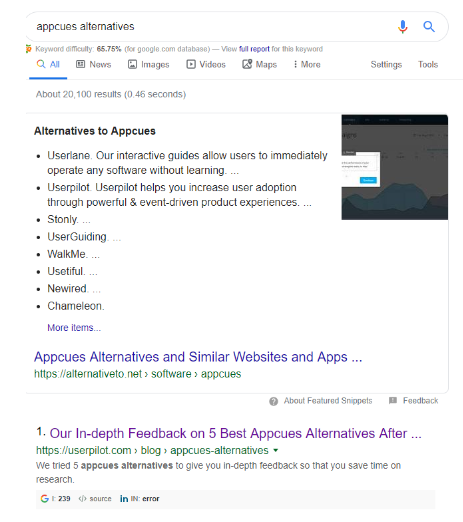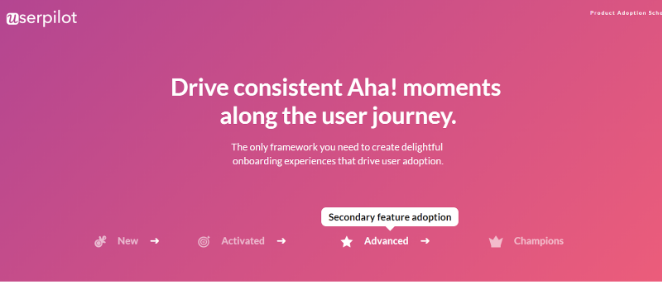In the last 5 years, overall Customer Acquisition Cost (CAC) increased by more than 50%.
Getting leads and customers through paid channels becomes more expensive each day. Social Media Platforms like Facebook or LinkedIn are repeatedly decreasing the overall outcomes of your ads so you will be forced to pay more and more.
For example, LinkedIn ads will definitely not cost you less than $3-5 per click – while Google Ads campaigns might go even to $20 or $30 per click.
Thus – collecting the big number of leads through paid channels isn’t profitable anymore for SMBs – especially if your monthly subscription is $5-$50 on average.
But – as an alternative solution – there’re a lot of organic B2B lead generation and user acquisition strategies you can implement to get a tremendous number of leads.
Best part?
They’re completely free.
Hence – in this article we’re going to see what these strategies look like and guide you step-by-step to implement them.
So let’s get started.
What is organic B2B lead generation?
Organic B2B lead generation is essentially a process of collecting leads through different channels without paying for acquisition, ads, events, or any other things.
In other words – organic B2B lead generation is completely free.
Well – not quite free. You still need to pay your employees and buy the appropriate tools.
But at the end of the day – it’s way more affordable than using ads for your lead generation.
You need to pay for people and tools anyway. The only question is:
“Do you want to pay additional costs for leads?”
If your answer is no – then continue reading this article because that’s exactly what we’re gonna see.
Organic B2B lead generation is an aggregate of different strategies and methods we’re using to gather leads without paying for them.
What’s the ROI of organic B2B lead generation?
This doesn’t sound spectacular – but believe me – if done the right way – you can see a great increase in the number of leads and customers in the first three months. I had to ask for SEO proposals from various places but then I did it myself.
Here’s the exact step-by-step process I’m using to quickly improve SEO rankings and get high-quality leads from Google.
1. Take advantage of SEO-friendly content
This doesn’t sound spectacular – but believe me – if done the right way – you can see a great increase in the number of leads and customers in the first three months. I had to ask for SEO proposals from various places but then I did it myself.
Here’s the exact step-by-step process I’m using to quickly improve SEO rankings and get high-quality leads from Google.
1. Identify high-intent keywords
Everything starts with research. The first thing you should do is keyword research with a keywords rank checker and identify high-intent keywords.
What are high-intent keywords?
High-intent keywords are essentially the keywords that are typed by the people who are ready to buy your product or who are seeking some solution you’re offering.
For example – we’re building user onboarding software – and we’re helping companies convert more trial users with user onboarding flows.
So, in our case, high-intent keywords are: user onboarding software, product roadmap tools, user onboarding tool.
Or, you can also try to find people that are looking to switch from your competitor to some other tool.
Usually, people like these are typing the keyword [company name] alternatives.
In our particular case, around 300-400 people are searching monthly for Appcues Alternatives.
And guess what?
We’re ranking first there with our article about Appcues Alternatives:

2. Write SEO-friendly articles
- Try to answer the reader’s questions as soon and as in-depth as possible.
- Put your focused keyword in the URL without variations (except if you already have some URL that will look like that of course) – example: www.companyname.com/blog/focused-keyword this gives a clear signal to Google that you’re trying to rank for that keyword.
- >Use your focused keyword inside the article in the exact format at least 15-40 times depending on the length of the article (for example, in 2000 words article I’m repeating the focused keyword around 15-20 times).
- Don’t forget to optimise your images and reduce their size – it will help your article load faster, and Google appreciates that.
- Make your article optimised for SERP features – if the answer the readers is seeking is clear from the keyword, then try to optimise your article as much as you can for the SERP so Google can feature your snippets.
3. Build backlinks to that article
- Writing guest blog posts – Guest blog posts are a great way of building backlinks. Building backlinks this way is a little bit time consuming – but at the end of the day, it’s one of the best ways for doing that. Why? Because you’re able to put the anchors you want and you will be 100% sure that you’ll get the backlinks if you write guest blog posts.
- Building backlink partnerships – finding other companies in a similar market like you that are also writing a lot of guest blog posts and building partnerships is a great way of getting backlinks. Whenever one of you writes a guest blog post – you will cross-link to each other. This way, both sides are getting backlinks from different websites.
How many backlinks you need in order to rank as first on Google depends mostly on the ranking difficulty of your focused keyword. But in a lot of cases – you will need around 5-25 backlinks.
2. Distribute your content and prepare a lead magnet
When writing other types of articles, such as how to increase SaaS product adoption, doing distribution as soon as you publish the article is highly recommended.
This way, you will be able to reach a tremendous number of people before even ranking first on Google through SaaS SEO tactics.
If your article is optimized for conversion, you will easily convert at least 7-10% of your readers.
With nicely executed content distribution strategies, you will be able to get around 3000-5000 people to read your blog without paying for ads.
Here’s a sample of the content distribution checklist I’m usually using:
- Publish the article on the company’s social media.
- Offer guide in exchange for comment on my LinkedIn post.
- Publish the article on GrowthHackers and get upvoter (in 60% of cases I’m getting featured in GrowthHackers newsletter reaching 100s of thousands of people).
- Publish an article in relevant communities on Facebook and Slack.
- Find people who might be interested in the article and send an email to them (it’s a great way of building a relationship with them that can later result in customer acquisition).
- Publish the article in your newsletter and reach out to other companies that are running article roundups.
Another great way to collect B2B leads the organic way is to prepare a lead magnet.
Usually, lead magnets are ebooks, quiz maker, courses or some exclusive educational materials.
For example, at Userpilot, we just launched our Product adoption school where we’re teaching our potential customers how to improve their product adoption.
Once you create your lead magnet, it’s time for distribution. You can repeat the processes we already mentioned.
The purpose of lead magnets is to collect emails and nurture your prospects further through, for example, the SaaS sales funnel. Poptin is an optinmonster alternative to collect such leads.
3. Leverage the power of Slack communities
Slack communities can be a gold mine for generating B2B leads.
Here’s what you need to do:
- Identify the relevant Slack communities in your industry – ask other people in your network for any communities or simply try to find them online. Once you join – you’re ready to rock n’roll.
- Introduce yourself briefly – but don’t be salesy – Upon joining some community – introduce yourself briefly and let them know that you’re ready to share the value and help other people. Mention your product and what you are doing in just one sentence. If they see that you’re salesy they will either kick you out or avoid you for eternity.
- Create keywords – it can be really overwhelming to check all the Slack channels every time. Instead, go to the workspace’s settings and put the comments in. This way – you will be notified only when someone uses some of your keywords. The keywords should be related to your business. In Userpilot’s case, our keywords are user onboarding, user onboarding tool, product tours, etc.
- Jump in the conversations and show value – once you find interesting threads – jump in the conversations. This will help you build a personal brand inside the community, and people will appreciate your help.
- Personally welcome new people – whenever someone joins the community, write them a private message and welcome them personally. It’s a great way of building relationships with them from early on. But remember – if they don’t reply you back, don’t message them again. Don’t be spammy.
These are the Slack tips and tricks that are working for us. This way, we’re able to generate around 10-20 high-quality leads each month. It’s not too much, but those 10 – 20 leads are very likely to convert into customers (our conversion rate is around 60-70% there).
The bottom line
As you can see – organic B2B lead generation can be a great way of finding potential customers – but it requires some time, nice scheduling skills and carefully planned workdays.
If you implement those strategies now – in the next 2-4 months you will be able to add more than 5000 new website users and over 1000 leads each month.
Don’t believe me?
Try them out. But remember – great execution is more important than anything else.





One Response
Hi there, I check your blog daily. Your writing style is witty, keep up the good work!